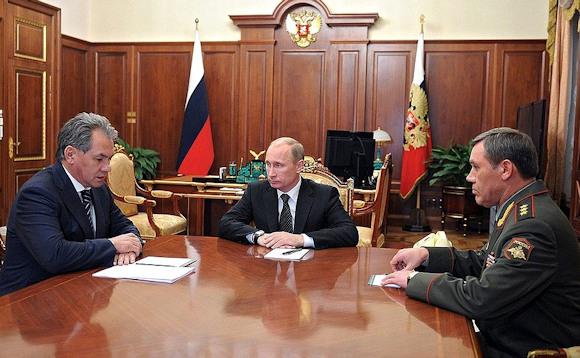The current strategic organization of command and control of the Russian armed forces is relatively simple. At the summit we find President Putin expressing his political objectives, indicating theend state strategic to Defense Minister Shoigu who, in turn, involves the Chief of Defense Staff, gen. Army Valerij Gerasimov. At this point, all the commanders at the various levels, starting from Gerasimov, down to the commanders of the 5 Military Districts and, gradually, up to the commanders of the various units, should elaborate their "concept of action", express their " intent ”with which they intend to carry out the assigned mission and, finally, to issue orders. This is what should happen and instead leads to the use of the conditional in describing what has happened.
Given how the "special military operation", renamed "Donbass Defense Operation" at the beginning of April, has been conducted so far, in relation to the shift of the main effort from the direction on Kiev to that on the south-eastern regions of the country, it would seem that everything took place under the banner of a certain improvisation and not respecting the hierarchical chain.
The lack of confidence placed in his closest military collaborators, Shoigu and Gerasimov - leading figures who, as noted by all analysts, have literally disappeared from the scene - would have prompted Putin to give orders directly to the military commanders on the ground who, in the absence of a thoughtful and effective coordination action, they would have operated in a somewhat disconnected way, each conducting their own operation.
The growing tendency manifested over time by Putin to surround himself with must also be inserted yes men, therefore, not of trusted and enlightened advisors, but of characters who indulge his ideas and desires without questioning them. Here then, in accordance with the "will of the Chief" and not in adherence to the operational reality, the commanders of each single Army deployed on the field probably ordered their troops to do exactly what in their interpretation was in line with what Putin requested. , even though they were aware that most of the orders were meaningless.
It should be borne in mind that Putin never gives clear and direct orders, to avoid the responsibility for any single event being attributed to him; if the situation does not turn out to be favorable, the consolidated technique of "approximate directives" allows him to make at least a large part of the responsibilities fall on the material executor of the orders. No surprise, then, in the face of the chaos we are witnessing.
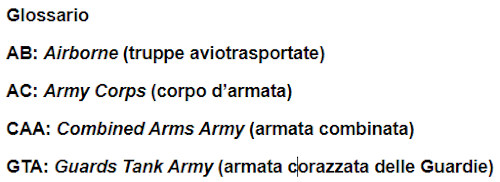 An example is the now famous 60 km long Russian vehicle column created north of Kiev in the early stages of the invasion. The "traffic jam" occurred due to the faster progression of the units of the 76th AB division initially located in the first row in the 35 ° CAA device compared to the slower ones of the 36 ° CAA, while all of them proceeded along the northern route that from Belarus alleged to Kiev.
An example is the now famous 60 km long Russian vehicle column created north of Kiev in the early stages of the invasion. The "traffic jam" occurred due to the faster progression of the units of the 76th AB division initially located in the first row in the 35 ° CAA device compared to the slower ones of the 36 ° CAA, while all of them proceeded along the northern route that from Belarus alleged to Kiev.
The “cap” created by the 36th CAA slowed down the 76th division which, in turn, blocked the bulk of the 35th CAA, completely clogging the supply lines of all the units present in the sector.
Much more serious is what happened to the 1st GTA along the north-eastern route towards Kiev, completely disbanded because the 2nd GTA, deployed to the north of the 1st GTA, did not absolutely bother to protect its side to safeguard it, even in in this case, the supply lines and attacks by Ukrainian units proved effective.
Then it was the turn of the 2nd GTA, which was no longer able to continue the offensive towards Kiev and the 6th CAA, active in the same sector between the two aforementioned GTA which, completely uncovered on the flanks, suffered heavy losses. for the encirclement maneuvers conducted by the 92nd Ukrainian mechanized brigade.
There was no coordination; each commander slavishly carried out the orders given to him from above without considering the unity of the intent of the superior command…. Perhaps because this unity of intent is not that it was so clear.
The withdrawal from the sector west of Kiev - where the attrition suffered by the 1st GTA and the 20th CAA, together with the serious logistical problems encountered, led Moscow to reconfigure the device to focus efforts on the Donbass sector - took place. somewhat chaotic. While the units of the aforementioned armies received the order to move south of Izium and in the Severodonetsk area, to join the remains of the 6th CAA in order to encircle the Ukrainian forces from the north, simultaneously the 1st BC of the Republic of Donetsk received orders to attack Severodonetsk directly from the south.
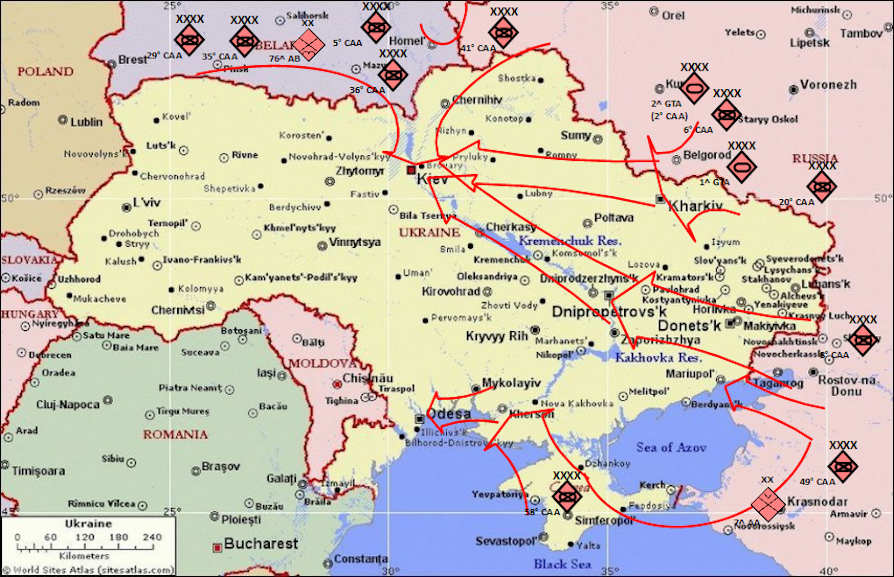
The problem with this maneuver is that it took place without any coordination between the commanders of the indicated armies, each fought on their own and, even in this case, the purpose was not defined in the minds of the commanders themselves. Hence the need to designate a supreme commander for the management of operations in Ukraine, someone who had a rank, authority and, presumably, a capacity superior to those of the various generals engaged so far in this offensive.
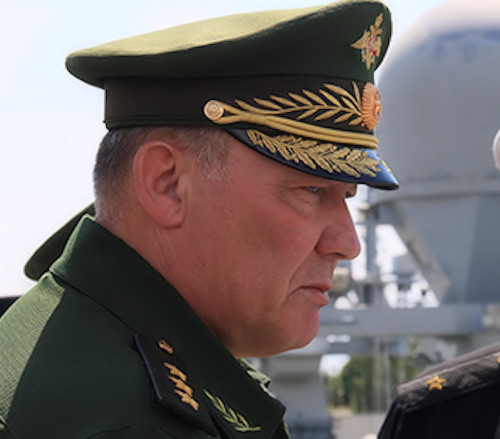
Putin understood that, from the beginning, a unified command should have been established, placed under the direction of a single man who was not himself, but a soldier with solid experience behind him. The choice fell on the Southern Military District, commanded by Army General Aleksandr Dvornikov (photo).
Over the next few days, we will hear Western comments on Dvornikov's combat experience in Syria. We do not make hasty judgments on his real ability to wage this war because, let's not forget, the various commanders of the large units that have so far operated in Ukraine are veterans of that war and the results are all in front of our eyes. There are other aspects that are really important in this decision.
The Russian Armed Forces are organized, equipped and trained to receive orders from the Commands of their own Military Districts to which they belong, so far it has not been so, from now on it will be.
As an army general, Dvornikov is of a higher rank than all army commanders in the field, whose rank is colonel-general. This means that there will be no discussions on his orders, no competition between the various generals, as has happened up to now, and no activity according to the criterion of "each for himself". Nonetheless, having Dvornikov behind them, the officers will not overturn the orders of their troops on the basis of Putin's impromptu decisions.
Now there is a well-defined chain of command and therefore a clear chain of responsibilities: the subordinate commanders, at all levels, will have to receive orders, coordinate and, in turn, issue their orders clearly.
We want to add, in any case, that the units of the armies under Dvornikov's command - the 49th CAA and the 58th CAA - at least in the first two weeks of the invasion performed much better than those of any other army, until when Putin ordered them to rush headlong into Voznesensk, Mariupol and Zaporozhye and trigger the massacres we all witness.
Another aspect that we consider interesting concerns the sudden large-scale use of peculiar support units similar to our “Railway Genius”.
In fact, at the end of the first week of April, the aforementioned Armies, which moved south of Izium and in the Severodonetsk area, received the order to organize the defense of the occupied territory to allow the intervention of the separate 38th Railway Brigade , called to restore the railway network in Kupyansk, Kharkiv, Izium and Svatove, previously sabotaged by Ukrainian forces.
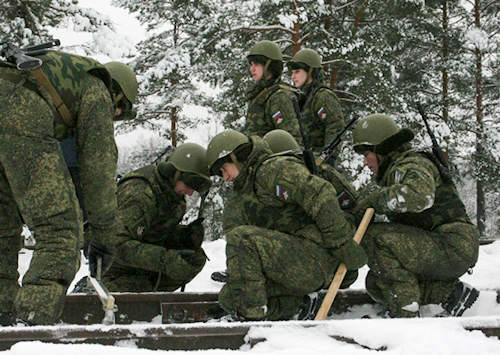 As mentioned on other occasions, the Russians make extensive use of the railway to increase their capacity for handling men, vehicles and materials.
As mentioned on other occasions, the Russians make extensive use of the railway to increase their capacity for handling men, vehicles and materials.
In addition to the aforementioned interventions, the Russians have repaired the railway connecting Kursk and Voronezh with Kupiansk and are now using it to bring reinforcements and supplies to the Izium area. It is no coincidence that starting from 8 April the influx of battalions from the Central and Eastern Districts to Kursk and Voronezh was detected. In particular, the need to make good the losses suffered is emerging, especially with specialized personnel.
The Districts have intensified the recalls of staff on leave since 2012, giving priority to drivers, mechanics, staff of theintelligence and complement officers. The basic requirement is that those recalled have received specific training of at least three months in their specialty.
The propaganda for the mobilization is also carried out in the Moldovan region of Transnistria, aimed at inhabitants who have Russian citizenship.
So let's see what is happening in the various sectors, in the light of the changes taking place.
In the eastern sector, the 1st GTA and 20th CAA continued to push south of Izium: on 5 April they took Brazhkivka and the next day the 13th Armored Regiment of the 4th Guards Armored Division launched an attack on Sulyhivka , while the 237th Armored Regiment of the 3rd Mechanized Division has attacked Dovhenke, and fighting for both villages is ongoing; in the same sector, the 95th Ukrainian airborne brigade continues to defend the areas around the towns of Sviatohirsk and Tykhotske which, however, were partly conquered by the Russians.
Proceeding southwards, we find the 1st BC of the Republic of Donetsk and the 2nd BC of the Republic of Luhanks which, by virtue of the reinforcements received from local militias, it is estimated that they can count on a total of 30 battalions and that, therefore, are 100 % of their staff. These units, framed under the 8th CAA, with the support of the artillery units of this Army, are operating mainly in the Severodonetsk area. In this sector they successfully attacked the 57th Ukrainian motorized brigade and, on 6 April, reached the outskirts of Zamulovka. It is curious to see how on February 24, at the beginning of the invasion, that is, when Moscow was expecting "loaves and flowers"1 at the time of the invasion, one circulated fake news issued by TASS2 in which it was said that the soldiers of the 57th Brigade had immediately abandoned the Ukrainian army, to spontaneously join the separatist forces of the self-proclaimed Republic of Luhansk.
Instead, it is a fact that the separatist forces supported by the Kremlin broke through the defenses of the 24th Ukrainian Mechanized Brigade, reaching Novotoshkivske and also occupied the town of Popasna. In other words, the 8th CAA is moving along two main axes, represented by the P66 and T0504 roads, on a sector about 30 km wide. For the record, in the Horlivka area, the Ukrainians counterattacked and regained control of a part of the town of Panteleimonivka.
 Remaining on the operations conducted by the 8th CAA, we arrive at Mariupol, where the lost units of the 150th mechanized division seem to have been replaced with elements of the 1st BC of the Republic of Donetsk and with Chechen militiamen; these units would benefit from the direct support of artillery units equipped with 2S3 self-propelled howitzers (photo).
Remaining on the operations conducted by the 8th CAA, we arrive at Mariupol, where the lost units of the 150th mechanized division seem to have been replaced with elements of the 1st BC of the Republic of Donetsk and with Chechen militiamen; these units would benefit from the direct support of artillery units equipped with 2S3 self-propelled howitzers (photo).
Since the beginning of April, the separatists' goal has been to take over the SBU building3 to establish an observation and shooting range on Metalurhiv Avenue, in order to connect this area with the Kalmuskyi district, further north in the city. In this way the Russians divided the defense organized by the Ukrainians into two parts, which now sees the 36th Marine Infantry Brigade in the northern part of the city and the remaining part held by elements of the Azov battalion, the 56th motorized brigade and the 12th Battalion of the National Guard.
The last sector of interest for the analysis of the evolution of the Russian offensive is the southern one. Here, on 5 and 6 April, the Ukrainians liberated the villages of Dobryanka, Novovoznenske, Trudoliubivka and Osokorovka (all about 70-80 km south of Kryvyi Rih), in an attempt to surround a battalion of the 11th Airborne Brigade and the 126 ^ Independent Coastal Defense Brigade, both located north of the Kozatke area. The general picture of the situation also indicates the attempt of the 49th CAA to counterattack from the south with units of the 205 ^ motorized brigade.
In the Kherson area it seems that the Ukrainian forces have spent the days from 6 April onwards to consolidate the positions reached during the fighting on 4 and 5 April. Apparently, they secured the settlement of Oleksandrivka (west of Kherson) and Shyroka Balka, but had to withdraw from Tomyna Balka and Sofivka.
For the future of the war in Ukraine all this indicates that General Dvornikov will try to achieve some sort of great success as quickly as possible, to guarantee President Putin by the fateful date of May 9,4 a "tactical victory" that sees Russian forces control a large part of Ukraine: the area of Donbass, Crimea and, possibly, the whole coast up to Odessa, even if the latter objective will not be so easy to conquer.
1 NC, The Russian infowar, Online Defense, 04/04/2022. https://www.difesaonline.it/mondo-militare/la-infowar-russa
2Fighters of Ukraine's 57th Separate Motorized Infantry Brigade lay down arms and join LPR, Tass, 24/02/2022. https://tass.com/defense/1410211.
3Sluzhba bezpeky Ukrainy, Ukrainian Security Service.
4 Recurrence of the victory of the Red Army over the Axis forces, which marks the victory of the "Great Patriotic War", the name given by the Russians to the 2nd World War.
Photo: Kremlin / MoD Russian Federation

